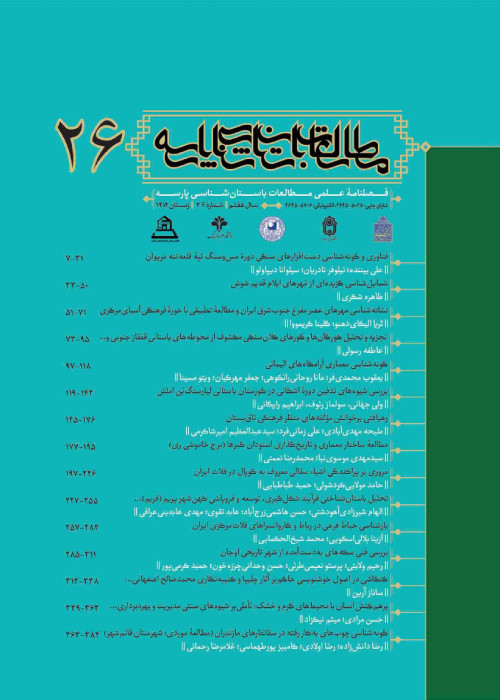Mokhar Teppe in Torbat e Jam: A Dusty Gem in Eastern Iran from Prehistoric to the Parthian Era (Classification, Typology and Chronology)
Archaeologically, the northeast region of Iran is one of the least-known regions in the Iranian Plateau. The reasons for this situation is multifold; some of these include rarity of archaeological investigations, its vastness and the associated restrictions such as desert areas and impassable mountainous areas. The present paper deals with the chronology of and investigations at one of the key sites of the eastern Iran: Tappeh Mokhar. This is site is located to the east of the town of Torbat-e Jam, by the river of Jamroud. Archaeological finds from this site include a vast spectrum of items, including chipped-stone artefacts, ceramics, stone vessels, and clay figurines, of which ceramics are the most numerous. These finds have been recovered from delimitation soundings, and archaeological reconnaissance. The main objective of this paper is to introduce this important, multi-period site through the recovered materials before it suffers from further damage which at present made it as a depot of waster of modern construction materials. In this paper, a classification and typology of the ceramic collection from the site has been provided and then, based on comparative studies, their relative dating has been suggested. This research follows a historical approach and has been fulfilled with a descriptive-comparative method. The main queries are: which periods can be inferred from the studies of the recovered materials of Tappeh Mokhar. What are the characteristics of Mokhar ceramic assemblage and which types of ceramics of which periods can be identified in this assemblage? The preliminary studies of the ceramic assemblage, however, suggest that the site was occupied during Chalcolithic period, Bronze Age, Achaemenid and Parthian periods, and its ceramic types are comparable with sites of the northeast region, Turkmenistan and eastern region, and then with those of north, south, southwest and west of Iran.
- حق عضویت دریافتی صرف حمایت از نشریات عضو و نگهداری، تکمیل و توسعه مگیران میشود.
- پرداخت حق اشتراک و دانلود مقالات اجازه بازنشر آن در سایر رسانههای چاپی و دیجیتال را به کاربر نمیدهد.


